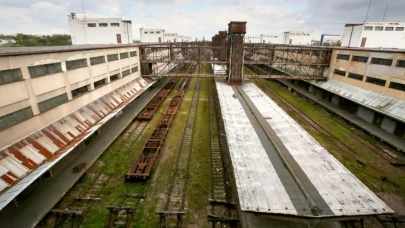
At the end of 2024, there were more than 22,300 units in the PRS sector in Poland, of which around 26% were brought to market last year. In terms of project supply, Warsaw's dominance is evident. The sector is expected to grow to over 35,000 units in the next three years. The latest JLL report indicates the rapid development of the institutional rental market and the growing interest of investors in this sector.
Growing supply in the institutional rental market
Despite the decline in the transaction market, investors continued to develop projects that had already been contracted earlier. The Polish PRS sector concluded 2024 with more than 22,300 units in operation, with approximately 26% being launched last year alone. The majority of the 26 new projects were located in Warsaw.
According to JLL's analysis, investors plan to deliver 5,700 units in 2025, in the form of more than 20 new projects. Experts also estimate that the market will grow to more than 35,000 units over the next three years, and should exceed 50,000 units in 2029. However, despite the increase in supply, the institutional rental sector in Poland accounts for only 0.1 per cent of the country’s existing housing stock.
"The Polish PRS market continues to evolve, demonstrating resilience and adaptability in changing economic and geopolitical conditions. The gradual reduction in interest rates is improving the investment climate in other European markets. In Poland, a similar trend is likely to emerge in the second half of this year. Investors are showing increasing interest in growth opportunities and in finding local partners who will allow them to scale up their operations efficiently. However, an economic and political push is needed to encourage investors and developers to increase supply", says Patrick Pospiech, Director, Living Investments, JLL.
The PRS market is mainly concentrated in the six largest Polish cities, with Warsaw dominating with over 40% of the total PRS stock. The share of the next two large markets of Wrocław and Kraków is 19% and 15%, respectively. However, as the sector grows, investors are also increasingly opting for less central locations and are more often including smaller cities in their plans.
A high standard translates into higher rent prices
PRS represents the upper end of the rental market in Poland, typically characterised by higher standards than the average market offer, which naturally translates into higher rental rates. In addition, PRS properties show exceptionally low vacancy rates, much lower than the average recorded in the individual rental market. The strong demand for new, well-equipped and professionally managed flats for rent in major Polish cities is prevalent among young tenants who are seeking a higher standard of living.
Although the Polish institutional rental market still seems to be behind Western Europe in terms of existing supply, strong demand and rising rents are spurring further investment. JLL experts forecast that the long-term demand fundamentals in major cities remain extremely strong. In the PRS segment, affordability and the needs of the younger generation, including migration to large metropolitan areas, play a key role. An important additional factor is the overseas migration that affects the largest cities.
A slowdown in the ‘buy-to-let’ demand
JLL experts estimate that there are approximately 1.2 million private rental units in Poland, with their share of the housing stock in major metropolitan areas comprising 12-16%. One of the main factors responsible for the growth of this market has been the rise in popularity of buy-to-let strategies. Over the last 10 years, there has been a marked increase in supply and an improvement in the quality of the flats offered for rent. The lack of any major regulatory impediments has enabled the rapid development of this segment. However, despite the significant increase in the supply of rental flats, the current offer in relation to tenant demand is still severely limited.
From 2024 onwards, we have seen a slowdown in ‘buy-to-let’ purchases by individual buyers. This means a significant reduction in the influx of new housing into the market. As a result, rents can be expected to continue to rise in both the private and institutional sectors, highlighting the need for an increased supply of new housing.
The Polish market is attractive to investors
In 2024, the Polish residential sector brought a gradual improvement in investor sentiment despite a challenging financial and geopolitical environment. While market fundamentals remain attractive, single-asset forward transactions face obstacles such as elevated financing costs and high prices in the primary market.
"Positive highlights at the beginning of 2024 included the Van der Vorm Group expanding its Polish PRS portfolio with the acquisition of 119 fully furnished residential units in Warsaw. The second half of the year saw the return of forward transactions, with AIF, NREP and the Ares-backed LifeSpot platform purchasing projects in Warsaw and Wrocław. As a result, the total transaction volume exceeded €150 million in 2024, a significant increase from the less than €60 million in 2023. The upturn in investment activity is expected to accelerate further in 2025, with a number of portfolios attracting investor interest", says Krystyna Pietruszyńska, Director, Living Investments, JLL.
The growth potential of this segment is particularly noticeable in the European context. Poland stands out as a market where the PRS sector is at an early stage of development. However, in the medium to long term, this segment will have an impact on the reduction of the housing deficit and the diversification of the housing sector in Poland. This shift can provide a valuable example of development for other markets in the region as well.



